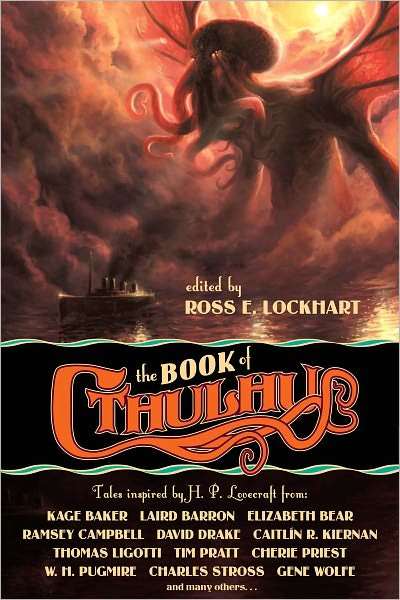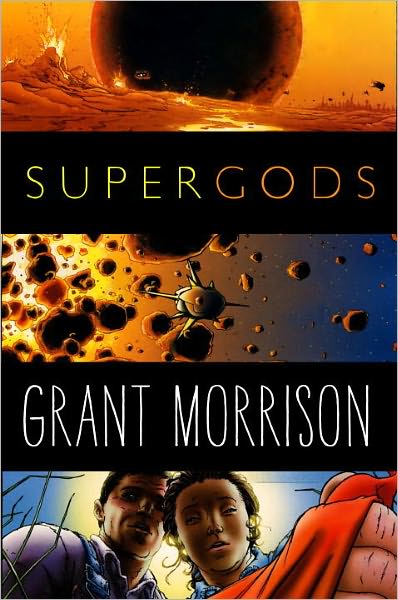Over the past week another two reviews have gone up at SFFWorld by the usual suspects – you friendly neighborhood Rob and everyone’s favorite Hobbit, Mark. We’ll kick things off with my review first.
Fantasy and humor have been mixing since Terry Pratchett, and probably before. There’s also been trend of viewing the Fantasy Quest/Battle/Epicness from the other side (i.e. not the “good guys”) as well (Mary Gentle, Stan Nicholls, Jacqueline Carey). Ari Marmell’s, The Goblin Corps is a superb confluence of these two trends. This is the second novel I’ve read by Mr. Marmell and much as I enjoyed the earlier (The Conqueror’s Shadow), this one is even stronger and more enjoyable:

Vampires are popular, as always, and at the forefront in popular culture as of late is Charlaine Harris’s Sookie Stackhouse novels, thanks in no small part to the hugely popular TV Show True Blood. What’s always been popular for long-running series is to publish a compendium or reference to the book series, in this case, Mark reviewed The Sookie Stackhouse Companion:

Fantasy and humor have been mixing since Terry Pratchett, and probably before. There’s also been trend of viewing the Fantasy Quest/Battle/Epicness from the other side (i.e. not the “good guys”) as well (Mary Gentle, Stan Nicholls, Jacqueline Carey). Ari Marmell’s, The Goblin Corps is a superb confluence of these two trends. This is the second novel I’ve read by Mr. Marmell and much as I enjoyed the earlier (The Conqueror’s Shadow), this one is even stronger and more enjoyable:

However, when the squad is assembled and the diverse creatures begin to mesh, first as a set of conflicting personalities, eventually as a functioning unit, the narrative power increases and the novel became much more enjoyable. The banter initially illicits chuckles because the words/phrases are humorous; but the banter becomes all the more effective as the characters become more familiar and the cadence of their dialogue is more fluid.
…
What also works in the novel is that, despite goblins, orcs and the other creatures of the Demon Squad typically being on the evil side of the good v. evil battle, rarely does the term evil even come up as a descriptive for our protagonists. Much like he’s given the characters of Cræosh, Katim, Belrotha a unique and believable perspective from their side of the great struggle (in as much as I was rooting for them), Marmell doesn’t really play the whole good v. evil card, except to play with reader expectations and the general notions of the fantasy tropes with which Marmell is playing in the novel. Even the Charnel King Morthûl is painted sympathetically at points in the novel and his opposite number on the “good side” (again implied from genre/reader expectations) is a less savory individual than one would expect to be leading the heroic efforts.
Vampires are popular, as always, and at the forefront in popular culture as of late is Charlaine Harris’s Sookie Stackhouse novels, thanks in no small part to the hugely popular TV Show True Blood. What’s always been popular for long-running series is to publish a compendium or reference to the book series, in this case, Mark reviewed The Sookie Stackhouse Companion:

As a Companion, it fills in those little details that obsessive fans just want to know.
Such details can be quite diverse. There’s the usual expected elements here - a miscellany of characters, places and key events, a detailed time line and summary of the books up to Dead Reckoning, comments by the author on how the books came about and what she was trying to achieve with them, and a detailed map of town of Bon Temps.
What makes this more interesting are the other elements. So, for example, within the summary of the books up to Dead Reckoning we also have some intriguing ‘secret’ telephone conversations transcribed between vampires Bill and Eric, which no doubt fans will enjoy. We also have Sookie’s family tree, a short story, an interview with Charlaine based around website questions (from clearly quite dedicated fans), Sookie Stackhouse Trivia Quizzes (thankfully with answers) and, believe it or not, cookbook recipes. So if you want to know how to make and serve Perdita’s Bread Pudding with Bourbon Sauce (page 275) or Classic Southern Sweet Tea (page 278), obviously to be eaten and drunk whilst reading the books, then here’s your chance!



































